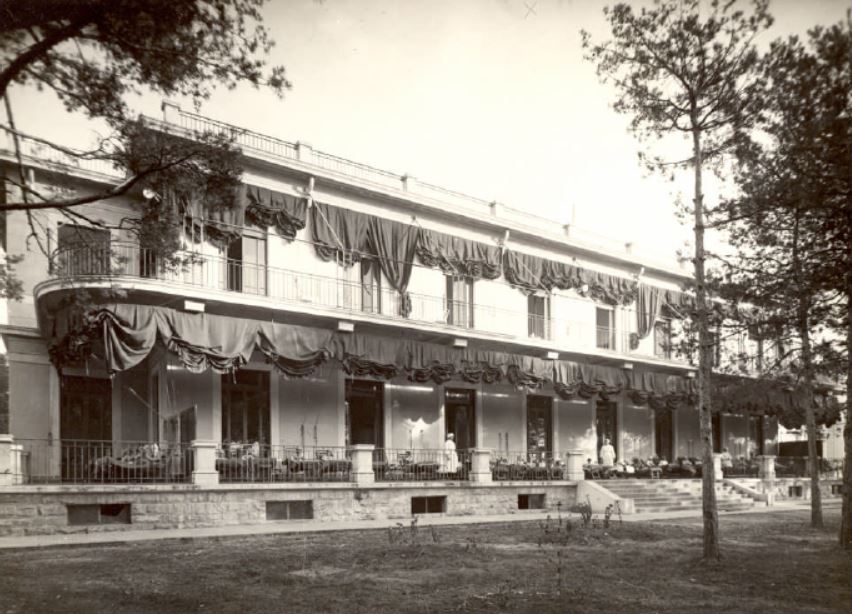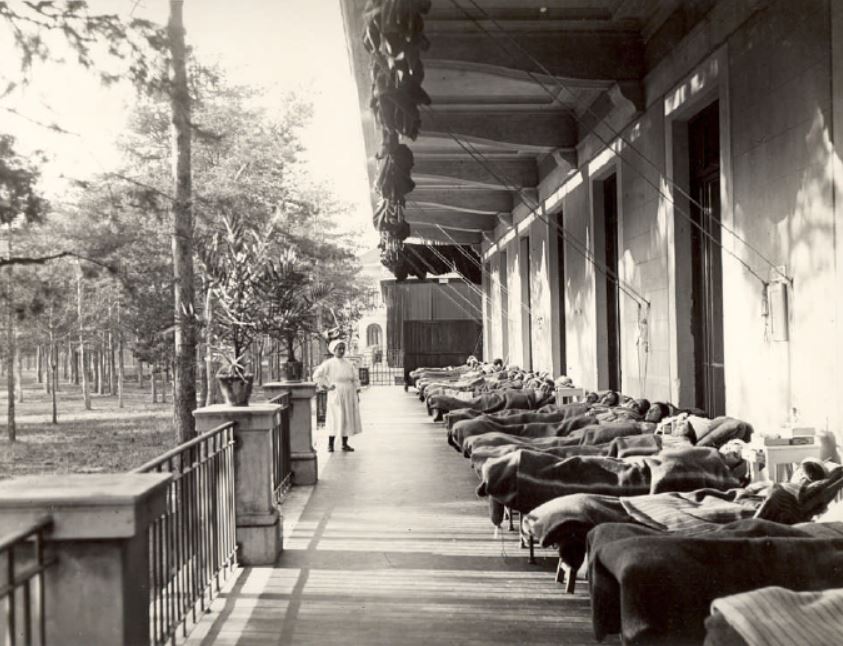SANATORIO CITTÀ DI MILANO [IT]
Exploration #109 (testo italiano a fondo pagina). At the beginning of the last century Italy, together with the other European nations, was fighting against the great health emergency of that time, “il mal sottile”, that is tuberculosis. The first structures in Italy were built in Valtellina; some of them are still present in the territory, some in a state of abandonment, others partially recovered in hospitals.
With the increase of cases, mainly due to the fact that the poorest family members lived together in small houses, the government of that time decided to build new sanatoriums all over the peninsula. The task was entrusted to a young clinical tisiologist, Eugenio Morelli, who in a few years succeeded in training new specialised doctors and creating a network of sanatorium structures; structures distributed throughout the peninsula, designed in a similar way to contain costs.
The structure we are talking about in this article was inaugurated in 1924 with the aim of hospitalising the sick TBC patients of the Municipality of Milan. Built in elegant Art Nouveau style, it stood just a few kilometres from Milan, far from large population agglomerations, busy roads and establishments that could alter the purity of the air. The place chosen was also on the edge of a large wood and a pinewood that protected it from the winds. The climate was constantly less hot than in the city, better ventilated in summer and less foggy in autumn. Enlarged during the following years, in 1930 it could count on about 1000 beds. Like all sanatoriums there was also a church, which in this case was particularly important and was connected by corridors to the sanatorium so that the patients did not have to go outside.
Starting in the 1950s, following the contraction of the sanatorium sector due to the advent of the antibiotic era, beds were gradually converted to hospital requirements until the 1970s when the structure became a fully-fledged hospital. The hospital continued in its function for many more years until in the early 2000s when it was decided to build a new hospital, because it was more in line with modern hospital concepts. The decision to build a new structure instead of modernizing the old one sparked a lot of debate but in the end the new hospital was inaugurated in 2015, right next to the old one which was left from one day to the next in disuse, abandoned and unattended, at the total mercy of thieves and vandals.
The photos you can see in this gallery were taken in various visits not long after the closure of the hospital. Unfortunately, at present the structure has been depraved of everything that could be stolen, including the heavy cast iron radiators and the marbles of the stairs and the church; the pews of the church were set on fire, copper was stolen from the roof and finally bored kids meticulously broke every single window glass. A real pity for a historic structure that could have been recovered and used for new purposes.
Esplorazione #109. A inizio del secolo scorso l’Italia, insieme alle altre nazioni europee, stava combattendo contro la grande emergenza sanitaria di allora, “il mal sottile”, ovvero la tubercolosi. Le prime strutture in Italia vennero edificate in Valtellina; alcune di queste sono ancora presenti sul territorio, qualcuna in stato di abbandono, altre parzialmente riconvertite in ospedali.
Con l’aumento dei casi, soprattutto dovuti al fatto che i nuclei familiari più poveri vivevano assieme in piccole abitazioni, il governo di allora decise la costruzione di nuovi sanatori su tutta la penisola. Il compito fu affidato ad un giovane clinico tisiologo, Eugenio Morelli, che in pochi anni riuscì nell’impresa di formare nuovi medici specializzati e creare una rete di strutture sanatoriali; strutture distribuite in tutta la penisola, progettate in maniera simile in modo da contenere i costi.
La struttura di cui vi parliamo in questo articolo venne inaugurata nel 1924 con lo scopo di ospedalizzare gli infermi TBC del Comune di Milano. Costruita in elegante stile liberty, sorgeva a pochi chilometri da Milano, distante da grandi agglomerazioni di popolazione, da strade molto frequentate e da stabilimenti che potessero alterare la purezza dell’aria. Il luogo scelto era inoltre ai bordi di un grande bosco e una pineta che lo proteggeva dai venti. Il clima era costantemente meno caldo che nella città, meglio ventilato in estate e meno nebbioso nell’autunno. Ampliata durante gli anni seguenti, nel 1930 poteva contare su circa 1000 posti letto. Come tutti i sanatori era presenta anche una chiesa, che in questo caso era particolarmente grande ed era connessa tramite dei corridoi al sanatorio in modo che i degenti non dovessero uscire all’aperto.
A partire dagli anni ‘50, a seguito della contrazione del settore sanatoriale dovuto all’avvento dell’era antibiotica, gradualmente i posti letto vennero convertiti a esigenze ospedaliere fino ad arrivare agli anni settanta quando la struttura diventò un ospedale a tutti gli effetti. L’ospedale continua nella sua funzione per molti altri anni fino quando nei primi anni 2000 viene deciso di costruire un nuovo ospedale, perché più in linea con i moderni concetti di strutture ospedaliere. La scelta di costruire una nuova struttura invece di rimodernare la vecchia scatena molti dibattiti ma alla fine il nuovo ospedale viene inaugurato nel 2015, giusto di fianco a quello vecchio che viene lasciato da un giorno all’altro in disuso, abbandonato e incustodito, alla totale mercé di ladri e vandali.
Le foto che vedete in questa pagina sono state effettuate in varie visite effettuate non molto tempo dopo la chiusura dell’ospedale. Attualmente purtroppo la struttura è stata depravata da ogni cosa che è stato possibile rubare, compresi i pesanti termosifoni in ghisa e i marmi delle scale e della chiesa; le panche della chiesa sono state date alle fiamme, rubato il rame dal tetto e infine annoiati ragazzini hanno minuziosamente rotto ogni singolo vetro delle finestre. Un vero peccato per una storica struttura che sarebbe stato possibile recuperare e destinare a nuovi utilizzi.

























































